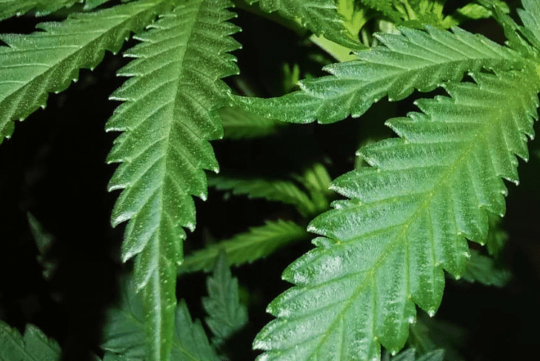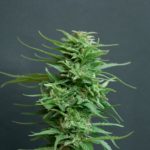Why can Cannabis Plants be Cloned?
What is Cloning?
In biological terms, cloning is the act of propagating and replicating a small piece of one organism into identical organisms.
Cannabis is unique because it allows itself to be cloned with relative ease. Marijuana plants can be cloned because of adventitious rooting.
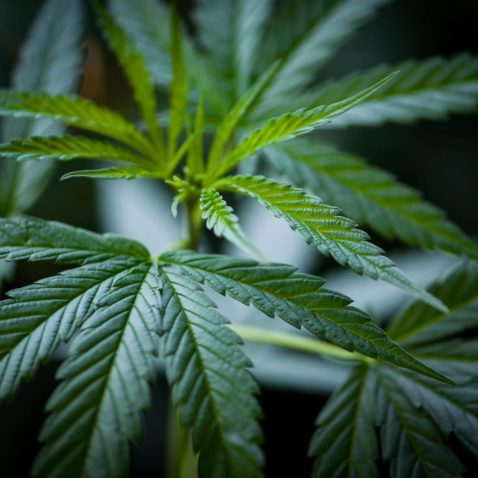
Adventitious rooting is the ability to root nearly anywhere on the plant due to some form of stress. In the case of cloning plants, the area that is cut will become the focal point for new roots to emerge.
The entire reason behind this ability is the will to survive. Organisms, whether plant or animal, have the will to survive and will go to great lengths to ensure this.
Many plants, such as cannabis, have a trick up their sleeve in the event that the main body of the plant is damaged.
A bud, leaflet, or stem can all develop roots and are popular points for horticulturalists to take cuttings from. The moment a cutting is taken, the inner workings of the cannabis plant signal that there’s a problem.
The problem-solver, in this case, are plant hormones called auxins, such as indole acetic acid (IAA).
Auxins generate adventitious roots in the area that was damaged to create an entirely new plant that can continue the work of its’ “mother” plant.
What are Mother Plants?
Now that you understand that cannabis plants can be cloned due to a stress response, it’s time to learn how cannabis cultivators use it to their advantage.
Just how marijuana growers manipulate indoor lighting to force a response from cannabis plants (vegetative and flowering phase), so do they harness adventitious roots to their benefit.

This is primarily done through the use of mother plants. Mother plants are specially selected cannabis plants that feature notable characteristics, such as
- Heavy yield
- Dense trichome coverage
- Pungent Aroma
- Unique terpene profile
- Strong taste
- Limited aroma
- Fast flowering time
- Small in size
- Heavily branched
- Exhibits colors
- Potent THC or CBD content
There are many more traits to search for in cannabis plants, but these are just a few.
When cannabis cultivators are searching for ideal mother plants, they are pheno hunting. Phenotypes are the characteristics that are found in the same genetic strain (genotype).
For example, if you grow 10-seeds from a pack of Blue Dream, you’ll notice that you’re unlikely to encounter the same phenotypes 10 times. Instead, you’ll notice a slight or large variation across each of the 10 plants.
Some may be tall, whereas others are short – and so forth.
Therefore, the special cannabis phenotype that you choose should have specific traits that suit your needs. Once you’ve found this holy grail strain, it’s time to turn it into a mother plant.
The idea behind a mother plant is simple: to take a large number of cuttings from it to create many identical cannabis plants without having to wait for them to become sexually mature.
Since your mother plant is sexually mature, all of her cuttings will also be sexually mature. In other words, they will have the same age as the mother – although they are significantly smaller and look like juvenile cannabis plants.
How to Select a Mother Plant From Seed
Selecting a genuinely unique mother plant is difficult, to say the least. Some cannabis cultivators get incredibly lucky, but this happens rarely. Selecting a proper mother plant also requires a significant amount of space, time, and money.
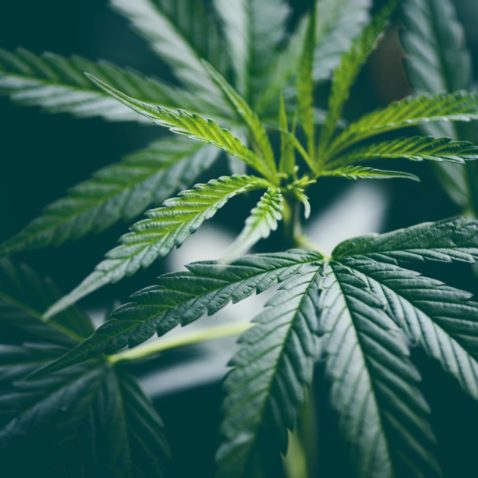
Anyone with a cannabis plant can turn it into a mother plant – but our guide is here to help you look for quality.
Since we’re not here to discuss your chances at the lottery, let’s discuss how to select a mother plant so you can achieve clone superiority.
First, you’ll need to scour reputable seed banks for ideal marijuana seeds that suit your needs. Once you’ve done so, purchase them and wait for them to arrive.
Once you have your prized seeds, it’s time to germinate them. You’ll want to germinate all of them because you’re going pheno hunting. The more plants you grow, the more possibilities you’ll find.
Next, you’ll need to wait for 1-2-months for your cannabis plants to reveal their sex. Unless you buy feminized cannabis seeds, you’ll need to weed out the males once they appear.
This also means that the instance of males will decrease your overall pool of potential mothers.
Next, which is the most time-consuming part of finding a mother plant, is to take cuttings and label them. Once complete, you must flower out the potential mothers to see what their overall flower quality and quantity looks like.
If you establish a mother plant without flowering her out prior to taking cuttings, you may select a mother plant with low yield or low potency.
Due to this, it’s essential to flower each potential mother to know exactly what you’re cloning.
However, this will add at least 2-4 months of time required before you can begin your clone operation. However, this process will ensure that you are cloning top-quality genetics with excellent results.
Fast forward 2-4 months, and you’ll (hopefully) have a clear winner. Since you took cuttings before switching the original mother plant into the 12/12 cycle, you need to revegetate them.
This process requires the clones to undergo a light schedule of 24/0 or 18/6.
Once the cuttings are large enough and contain multiple branches, you can begin to take cuttings to turn them into clones.
How to Maintain a Mother Plant
Maintaining a mother plant is one of the easiest things to do in regards to cannabis cultivation. Mother plants don’t require a lot of maintenance other than a consistent amount of nutrients, light, and space for their roots to grow.
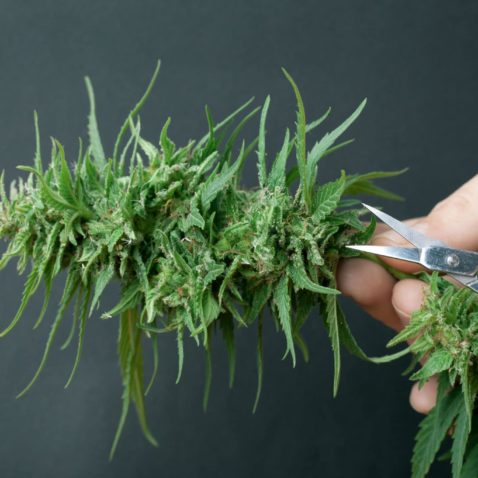
When feeding mother plants, you should use low-level nutrients – especially when it comes to nitrogen. Although nitrogen will create explosive growth, too much nitrogen inhibits adventitious roots in cuttings.
Furthermore, you don’t want a mother plant to grow like a Christmas tree. Instead, super crop the mother plant at multiple points to encourage bushy growth. This creates a multitude of nodes that you can take cuttings from.
In regards to lighting, mother plants don’t require a massive amount of lighting to stay alive. Depending on the size, a 300-watt metal halide bulb should be more than sufficient to keep your mother plant happy.
For multiple mother plants, a dedicated 600W or 1,000W HID is necessary to ensure an adequate light footprint.
Lastly, mother plants are seldom transplanted. If you keep on transplanting mother plants, they will outgrow your room quickly. By keeping mother plants root bound, you ensure that they do not become too large to contain.
However, it’s stressful for plants to experience being root-bound. Due to this, you can actually prune the roots – carefully. This requires you to take your mother plant out of its container and sheer off the bottom quarter of roots.
This requires a gentle hand because it will be traumatic for the plant.
Once done, fill the empty space with new soil. After a few days, your mother plant will have adjusted to the root pruning and will continue its growth.
As you can see, maintaining a mother plant is fairly straightforward and does not require a large amount of money. However, it does require a dedicated space for your mother plant to grow.
How to Clone Cannabis in 10 Steps
Now that you know how to select and maintain a mother plant – it’s time to learn how to clone cannabis in 10 easy steps. However, before you begin, make sure you have these tools at your disposal.
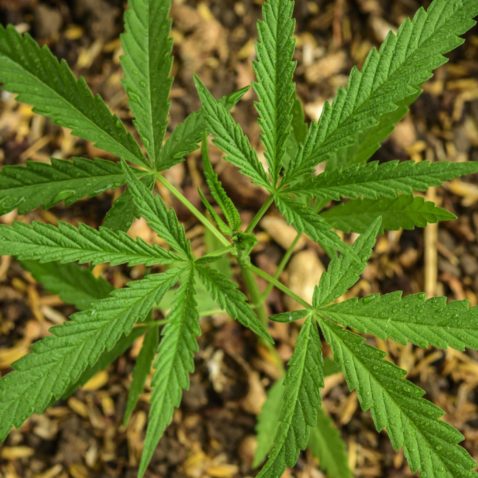
- A razor blade
- Rubbing alcohol
- Trimming scissors
- A flat ceramic or glass plate
- Rooting hormone
- Rooting cubes
- Latex gloves
- A tray with slots for rooting cubes
- A humidity dome
- A spray bottle filled with pH 6.2 water
Make a checklist of these items before you begin.
Step 1
Prepare the area that you will take cuttings. Remember, cleanliness is key when taking cuttings. The last thing you want is to bring a mold or fungi into your new clones by infecting them with a dirty razor.
Make sure your ceramic or glass plate is flat so that each of your clones receives a precise cut. Put your latex gloves on and sanitize your hands and all equipment with the rubbing alcohol. Bring your mother plant into the room and begin.
Step 2
Find a branch that contains at least 3 nodes. Cut a few centimeters below the node of your choice with your scissors.
Step 3
Take the cutting and place it on the ceramic or glass plate. Use your clean razor blade to quickly and precisely cut even closer to the node. If there are any leaflets growing near the cut node – remove them.
Step 4
Trim the edges of all the leaves. This will slow transpiration, which will keep more water within your cuttings.
Step 5
Take the cutting and dip the cut node into the rooting hormone. The rooting hormone comes in either gel form or in powder form.
Step 6
Place the cutting firmly into the pre-cut hole of the rooting cube. Spray the cutting with water and close the humidity dome to ensure 100% humidity.
Step 7
Repeat each step until you’re done taking all of your cuttings.
Step 8
Ensure that all of your cuttings remain moist. Lift each rooting cube and check for root nodules after 48-hours. Signs of rooting will take place between 4-12 days or longer – depending on the cannabis strain.
Step 9
Once you see white root hairs poking from the rooting cubes, it’s time to transplant. Open the vents on the humidity dome and reduce the overall humidity level to 70%.
Step 10
Transplant all clones into separate containers. Congrats! You just cloned your first batch of cannabis plants. Each clone is now a fully viable cannabis plant that contains all the same traits as your mother plant.
How to Clone an Autoflowering Cannabis Strain
We’ve received questions on how to clone autoflowering strains, but sadly this isn’t possible. Autoflowering cannabis strains do not flower according to photoperiodism, such as regular and feminized cannabis plants.
Instead, autoflowering cannabis plants flower according to their own internal clock. This means that even if you keep an autoflowering strain under 24-hours of light, it will eventually begin to flower.
Due to this, we do not recommend trying to clone autoflowering strains.
How to Clone a Feminized Cannabis Strain
If you’d like to know how to clone a feminized cannabis strain – then read along.
Cloning a feminized cannabis strain is the same as cloning a regular cannabis strain. Look at the directions above for guidance.
However, understand that feminized cannabis strains have sensitive genetics due to the way they were bred.
Always keep a close eye on feminized clones for the possibility of hermaphrodites. Aside from this issue, feminized strains are easily cloned.
How to Clone Cannabis in Soil
Refer to our 10 easy steps on cloning and replace the rooting cube with potting soil. However, you’ll need to wait for the new roots to colonize all of the soil so that you can remove the clone with the soil altogether.
How to Clone Cannabis in Water
Cloning in water is not as efficient as cloning in soil or inert substrates such as rooting cubes and Rockwool. Leaving cuttings submerged in water will produce roots; however, your results will be mixed.
The primary issue with rooting in stagnant water is the potential for bacterial growth. This is why it’s best to incorporate an airstone to generate oxygen bubbles. The best example of this is seen in cloning machines.
Cloning machines are highly efficient and automated machines that use pumps, airstones, and atomizers to give your cuttings an optimal amount of water and oxygen.
In general, cloning machines produce viable clones faster than conventional methods.
Summary
Now that you understand how to take clones from mother plants, it’s time to put your knowledge to practice. You can enhance and streamline your entire cannabis operation with the help of clones. Additionally, you’ll never have to worry about germinating seeds or rebuying second-hand clones.
Share the Love
If you found this post useful, please let others know about it by sharing it.
